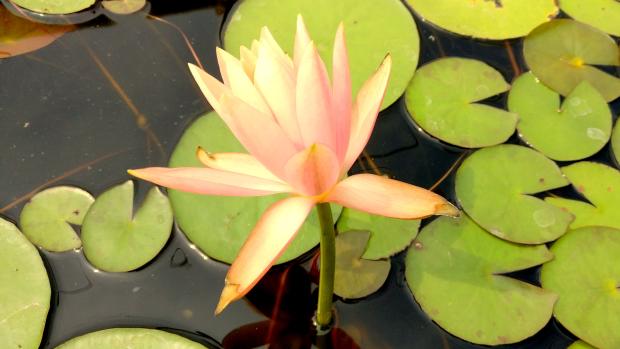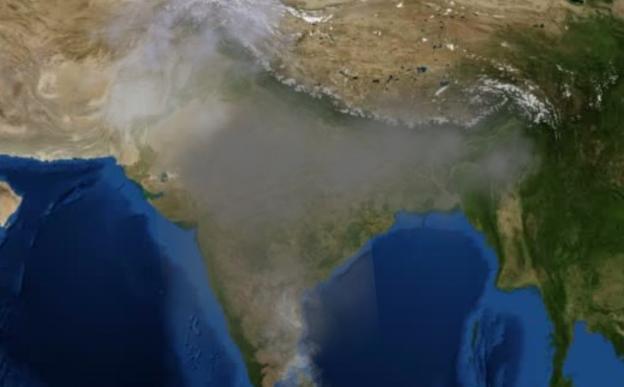
Photo: Siddharth Kankaria / Research Matters
Remember those days when Tobey Maguire played ‘Spiderman’ in the movie ‘Spider-man’ and we were left awestruck in the scene where he stops a swooshing train with spider web oozing of his hands? Thrilling, wasn’t it? As jaw dropping as it was, the idea of a spider web being strong enough to stop the roaring train seemed too far-fetched. Or was it? What if you were told that the orb-weaver spider, a type of spider found in North America, can spin its web that is five times stronger than steel?
Fortunately, we are a part of the brilliant planet surrounded by nature’s geniuses and all we need to find answers for gazillions of questions we face in pursuit of advancement is, a ‘very close look’. Unbelievable, right? But, we have already started realizing the power of this ‘closer look’! The term for this phenomenon of sustainable invention that is inspired by nature is called ‘Biomimicry’.
History of biomimicry
The term biomimicry comes from the Greek word ‘biomimesis’, which means to mimic life. Captivating as it is, this concept is the Holy Grail for futuristic designs in the fields of medicine, aerospace, automobile, textile and energy. Janine Benyus, co-founder of the Biomimicry Guild, Biomimcry Institute and author of the book ‘Biomimicry: Innovation Inspired by Nature’, writes -- “Biomimcry is basically taking a design challenge and then finding an ecosystem that’s already solved that challenge, and literally trying to emulate what you learn”. However, though wonders of nature inspire such designs, designers seldom ‘copy’ it the nature’s way. Rather, they understand ways in which nature deals with a particular design dilemma and use it as a blue print to solve a similar problem.
The earth, as we know today, is 4.5 billion years old and we humans have been on this planet for merely 0.004% of earth’s history. Before us, umpteen numbers of organisms -- old and new -- have grown and evolved by solving various sets of challenges in their natural environment. Concepts of shelter, waterproofing, temperature regulation, etc. are not human inventions -- nature, through its course of evolution, has been there and done that! However, Biomimcry, as a discipline, is now leveraging these solutions.
One of the earliest inventions based on biomimicry is the creation of aeroplanes, inspired by studying how birds fly. Leonardo Da Vinci, the famous Italian painter and scientist, drew a lot of sketches based on his observation of anatomy and flight of birds. Later, the Wright brothers successfully flew the first flight in 1903. Similarly, researches around the world, at some point in time, have asked themselves this question in their moment of creation –‘How does nature solve this problem?’ The answers, fortunately, have opened the doors to groundbreaking inventions.
Biomimicry in action
Many biomimicry success stories are providing new and sustainable solutions to various long-standing problems on the planet. For example, the damage caused by rains to wall paints is a gnawing problem for the construction industry. Through there are toxic cleaning agents, how does nature develop waterproofing solutions? When Professor Wilhem Barthlott, from the University of Bonn in Germany asked this question, he realized that the answer was in his study of the surface of the lotus plant, which has nano-sized spikes that kept away the dirt and water molecules from its surface. In other words, it has self-cleaning surfaces with hydrophobic properties. This is what inspired Dr. Barthlott’s self-cleaning paints that can be used as exterior coating with water-repellent surface – a discovery that is now commercialized and has inspired the range of self-cleaning camera lens, wallpapers, kitchen frontages, etc.
The Japanese bullet train called ‘500-Series Shinkansen’, running between Tokyo and Hakata, is one of the fastest trains in the world cruising at 320 km/h. The design demanded the train to run at the highest of speeds without making any noise – posing a challenge for designers. Bullet trains are usually prone to ‘sonic boom’ -- the sound associated with the shock waves created by an object traveling faster than the speed of sound. Hence, when these trains exited the tunnels, they would create a deafening sound owing to the change in resistance medium.
That’s when the designers turned to nature for inspiration. Their answer lay in the flight of owl and the beak of kingfisher. Owls are known for being the most silent and stealthy fliers of all birds. The silence in their flight is due to the design of their wing plumage that has many small saw-toothed feathers called ‘serration feathers’. The designers of the train emulated these ‘serrations’ by inscribing them on pantograph of the train. Voila! The noise reduced drastically, enough to meet world’s strictest standards! They then looked at the shape of the kingfisher’s beak, which enables the bird to easily transfer between two resistance mediums (air and water). The designers designed the train’s front to look like a kingfisher’s beak, thereby eliminating the creation of sonic boom. And just like that, one of the fastest trains on the planet was created, inspired by nature.
Saving lives with Biomimicry
The field of medicine has been the most blessed with advances in biomimicry. Quick healing glues for broken bones, inspired by the mechanism used by mussels to stick to slippery rocks, are touted to save a lot of lives. Artificial tendons and corneas inspired by sturdy, stretchy, sticky silks spun by spiders, might soon gift limbs and eyes to many. From sea cucumbers being studied to develop advanced brain electrodes, to developing a biomimetic hydrogel based on natural gelatin to regenerate bones —biomimicry has given a new perspective for obtaining plausible solutions in the face of challenges.
And how about biomimicry’s advent in the textile and fabric industries? SLIPS (‘Slippery Liquid-Infused Porous Surfaces’) Technologies, a company in Cambridge, Massachusetts, is now making a friction-free fiber that can repel water, oil and other liquids. This cutting-edge fibre has attracted the manufacturers of sportswear, construction uniforms, tactical suits for the military and medical gowns for hospitals.
MMT Textiles, another company, has taken a step forward and is now making fabric that mimics the structure of pine cones by opening and closing based on the surrounding humidity. Ordinarily, when a fabric gets wet, the fibres swell as they absorb moisture. Instead, this fibre has two synthetic polymers that are stuck together -- one polymer is hydrophobic (resists water) and the other is hygroscopic (absorbs moisture). The tension between these two layers causes the fabric to curl and shrink in response to water vapour. Under dry conditions, the fabric opens up like a pinecone, reducing airflow and increasing the fabric’s insulation properties. Under wet or sweaty conditions, the fabric becomes tighter and improves the air permeability of the garment.
Given these success stories, it is obvious that biomimicry is an incredibly powerful way to innovate and is touted as the future of designs. But the question that we now need to ask ourselves is ‘what’s worth solving’. While nature can provide answers to most of our questions, it probably cannot answer questions that rise out of our disharmony and reckless abuse of resources. It is in our hands to live on this planet gracefully, and create conditions conducive to life for all. We need to ‘look closely’ at the marvels existing on this planet, doing miracles each day just by merely existing and allowing ourselves to be inspired.






